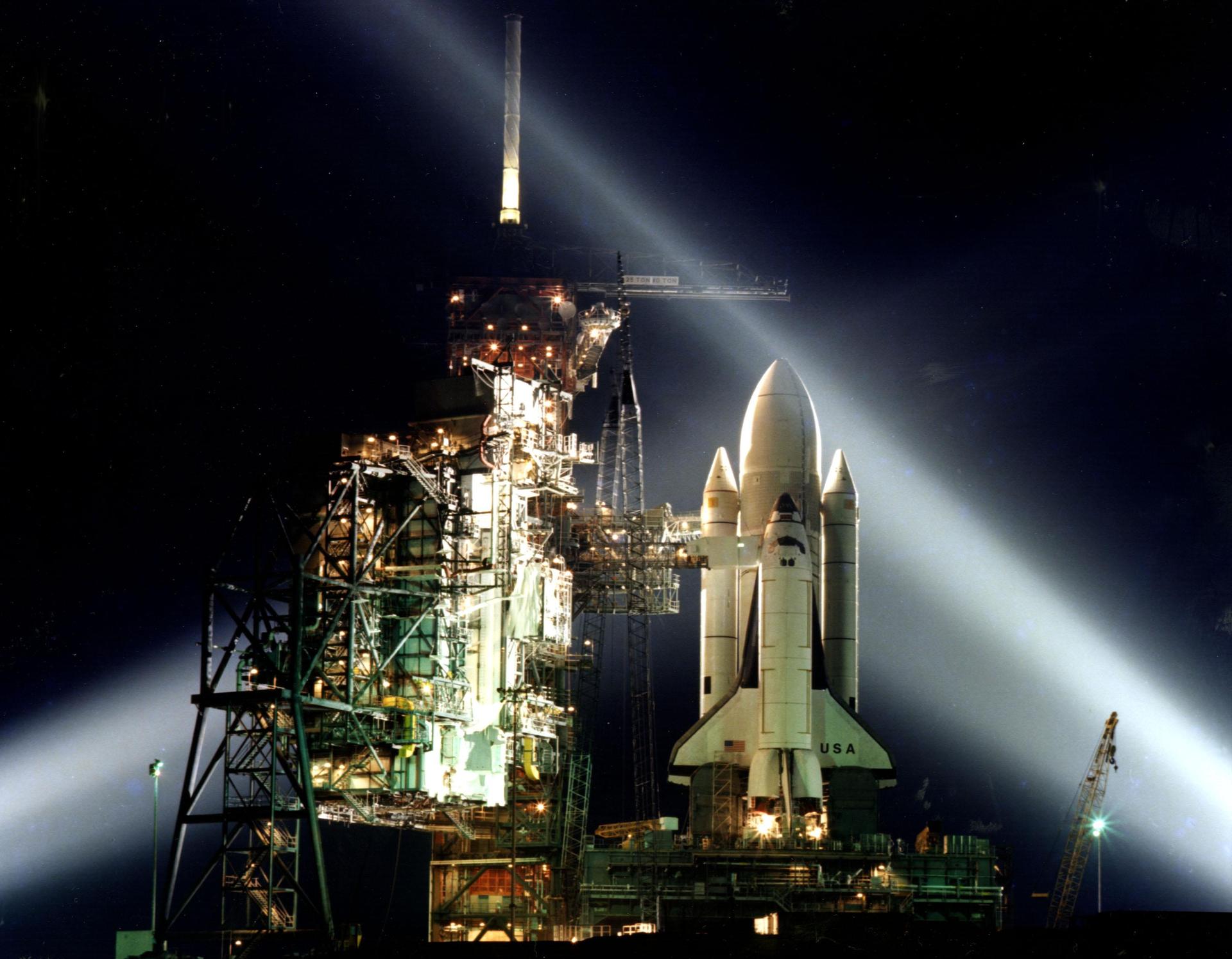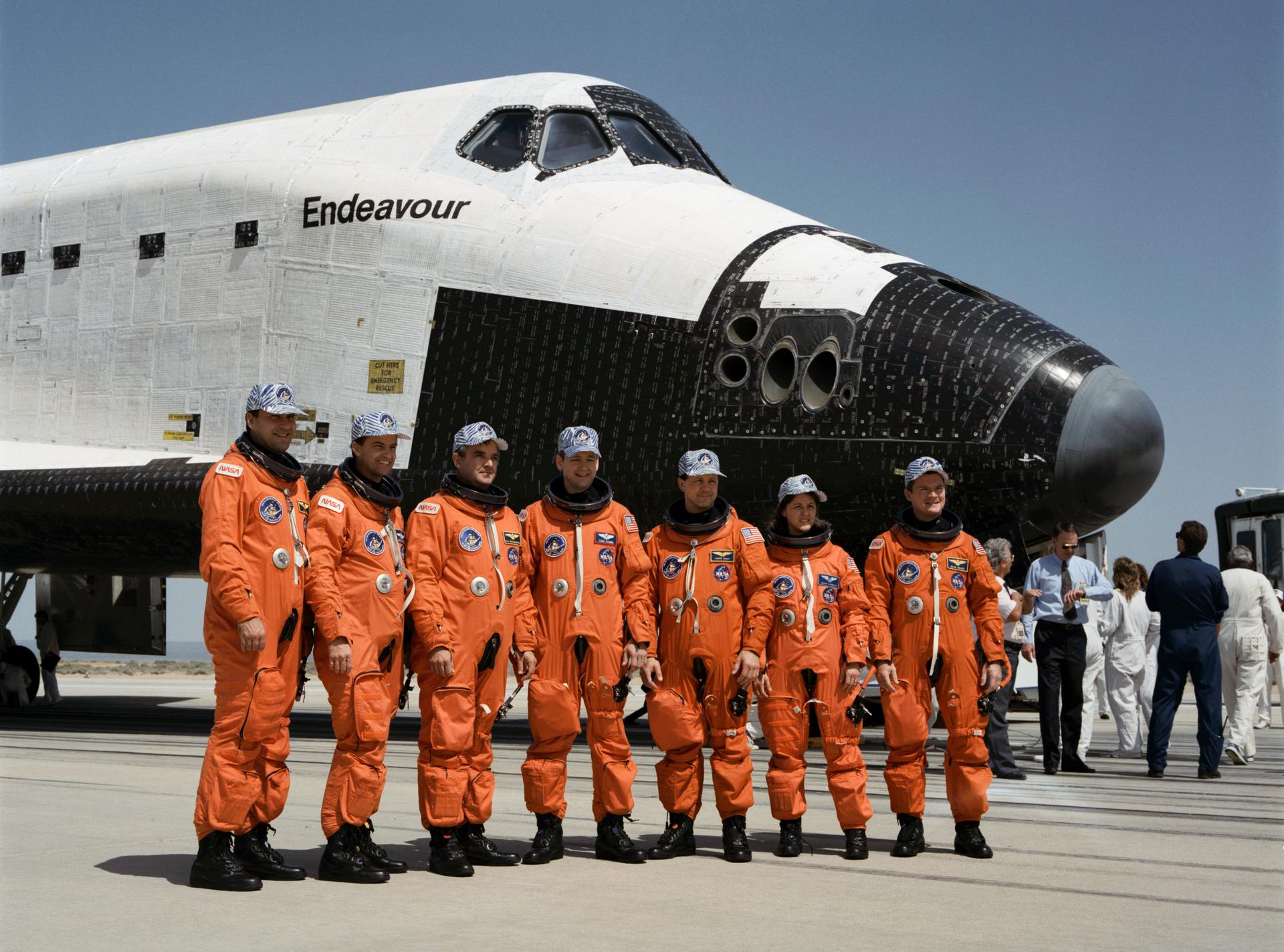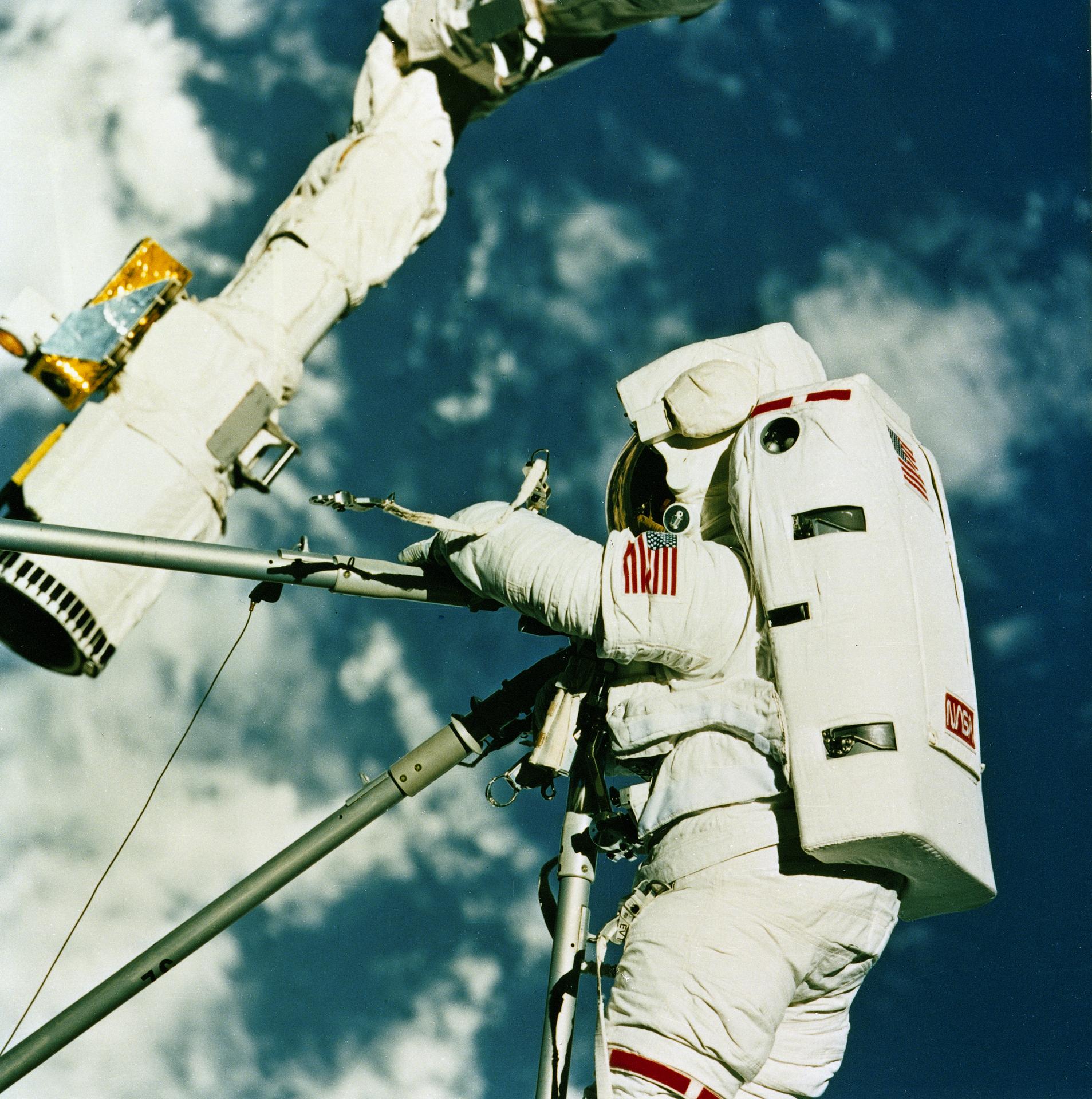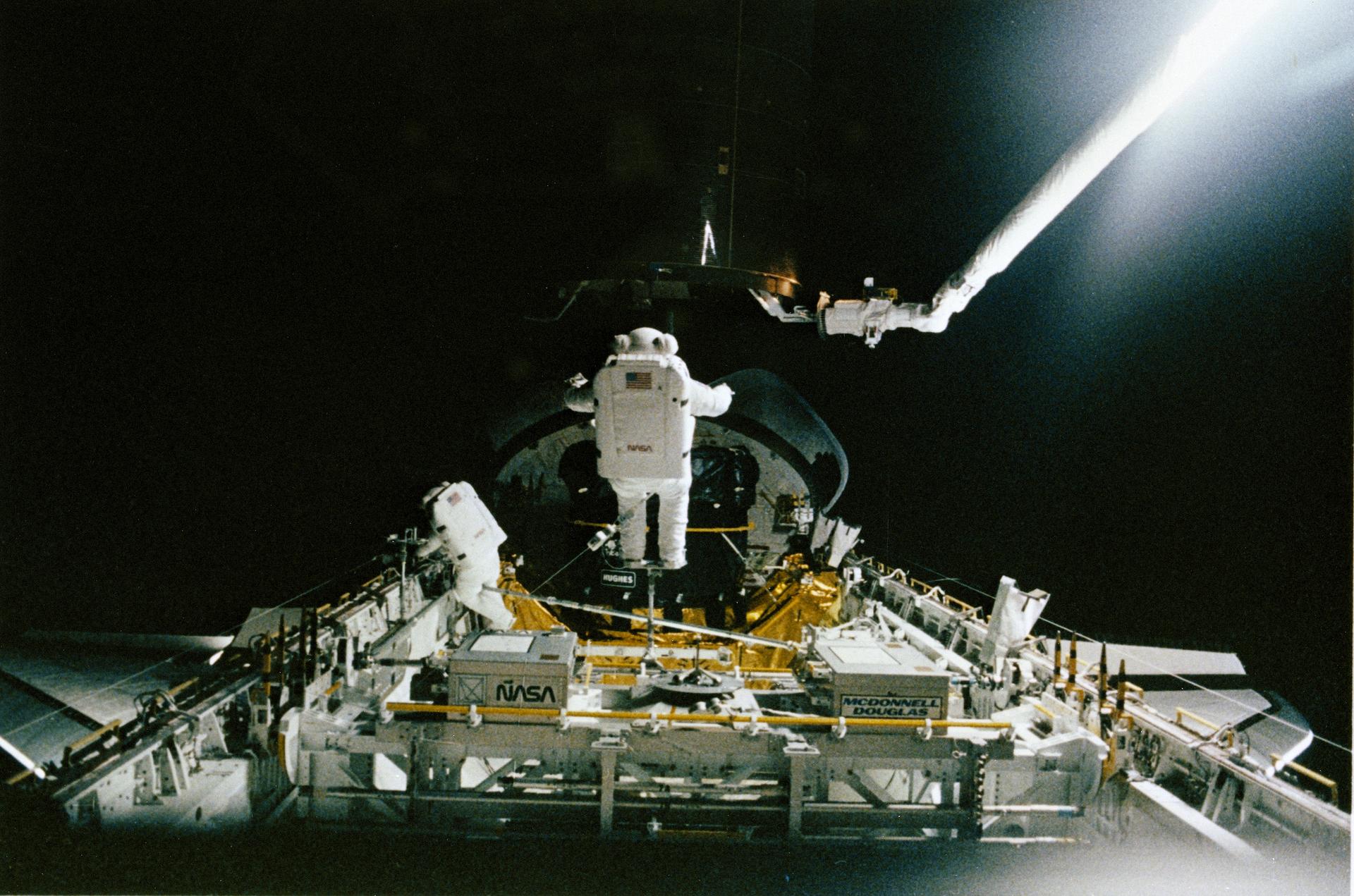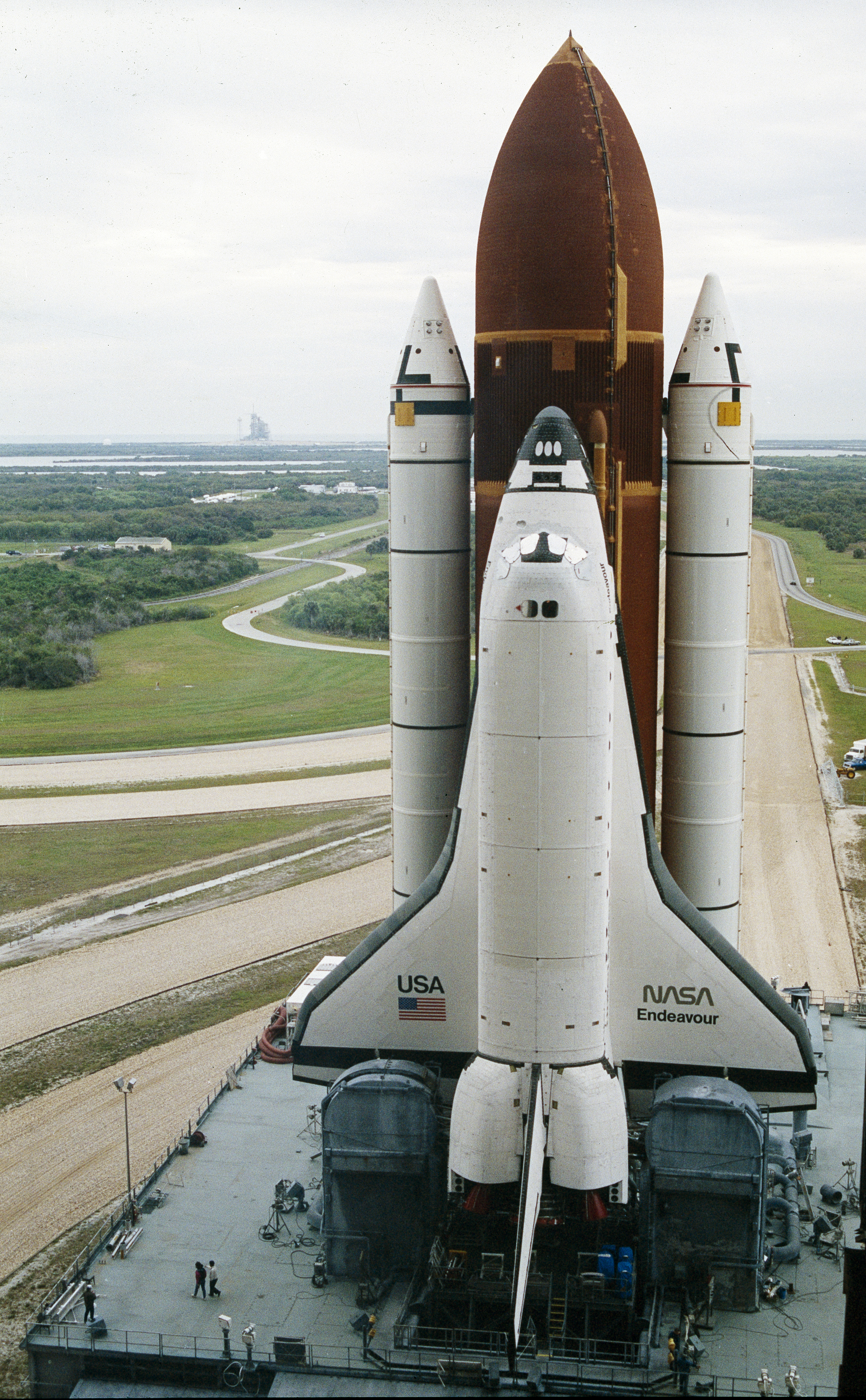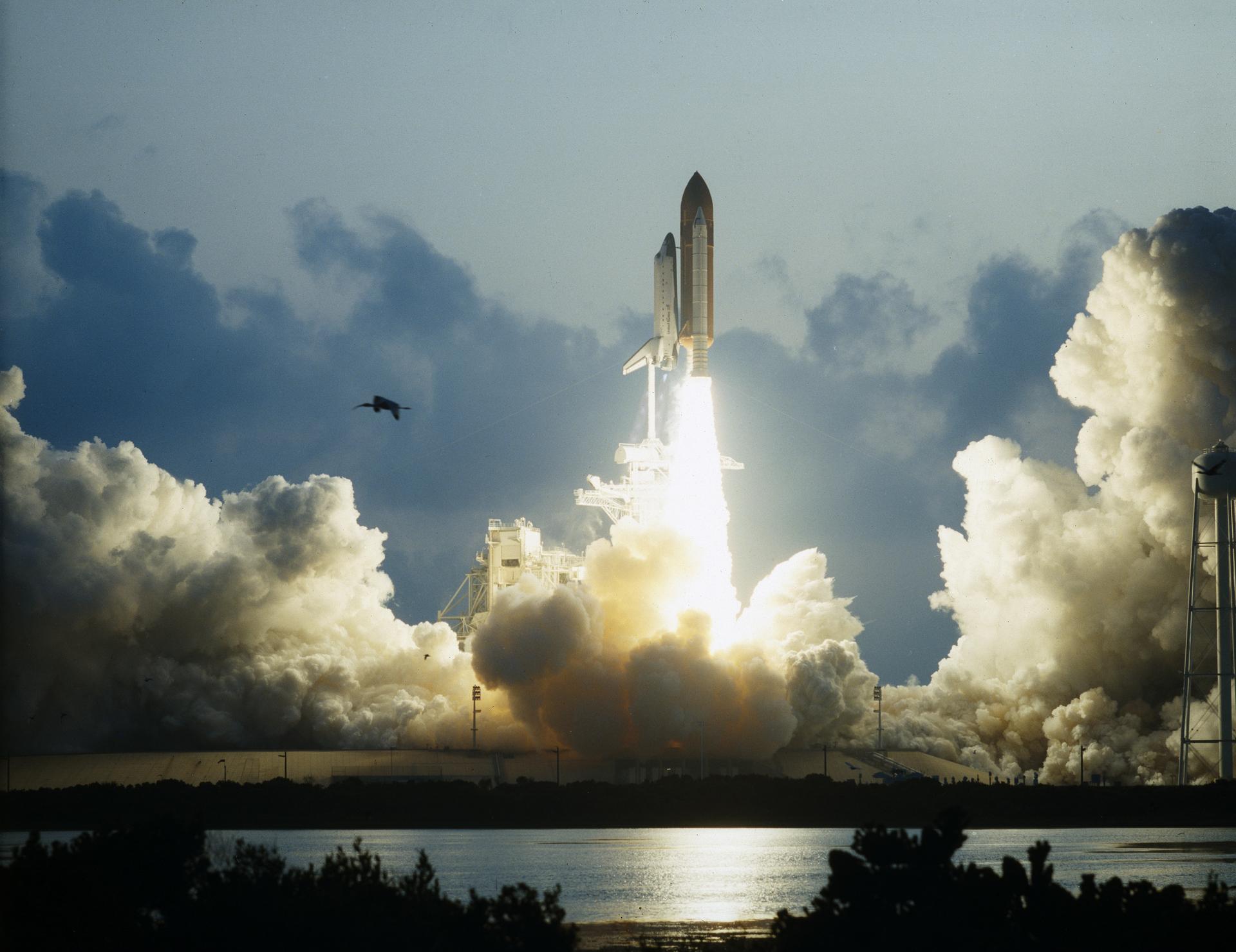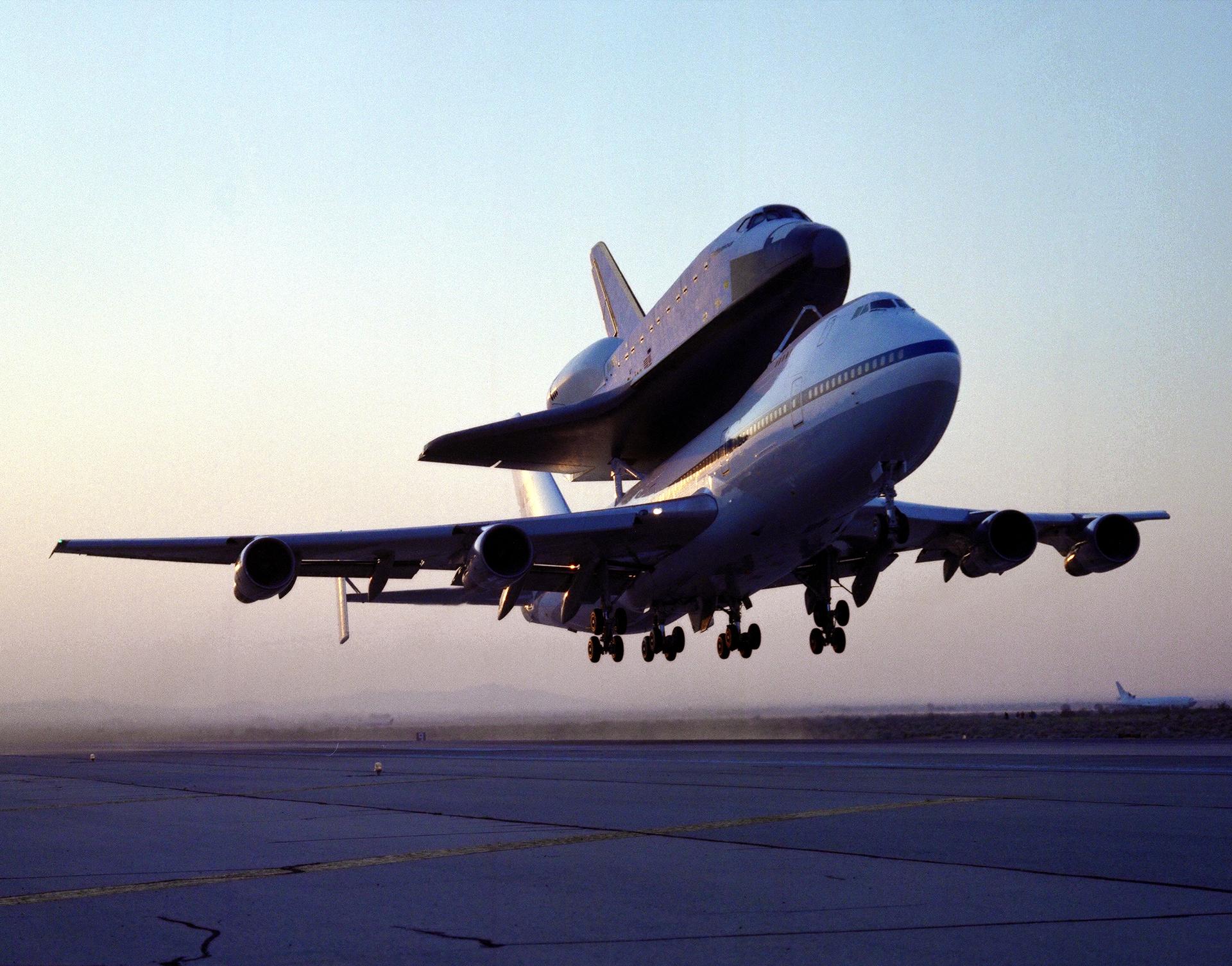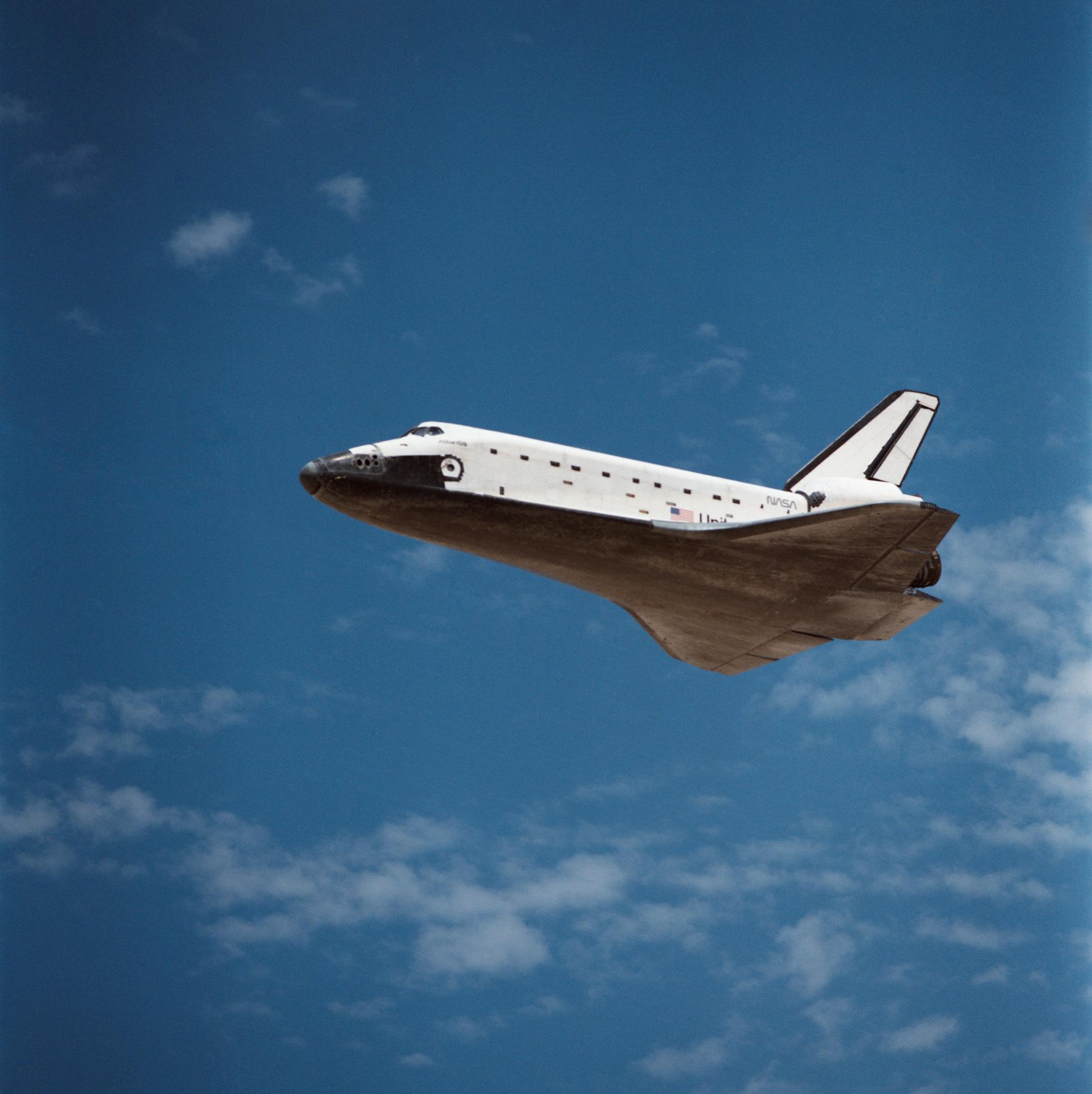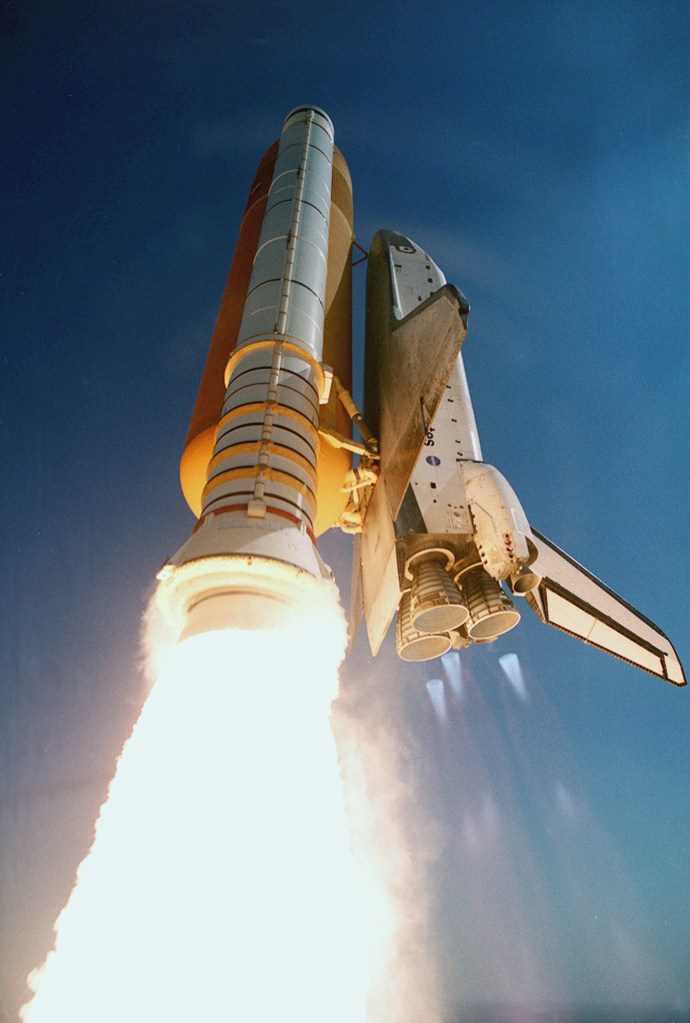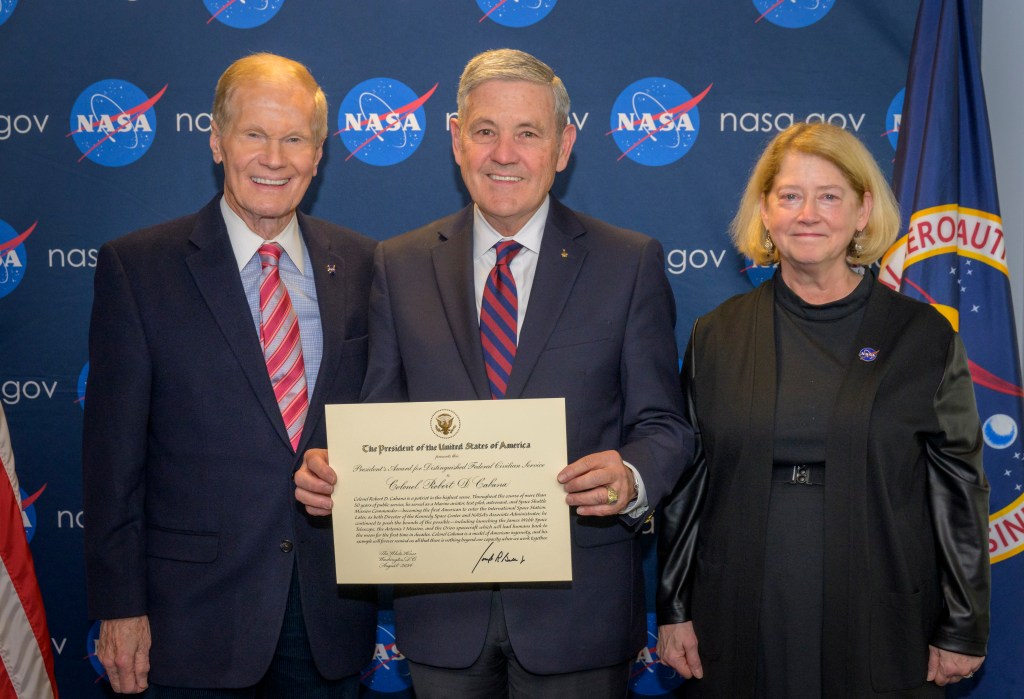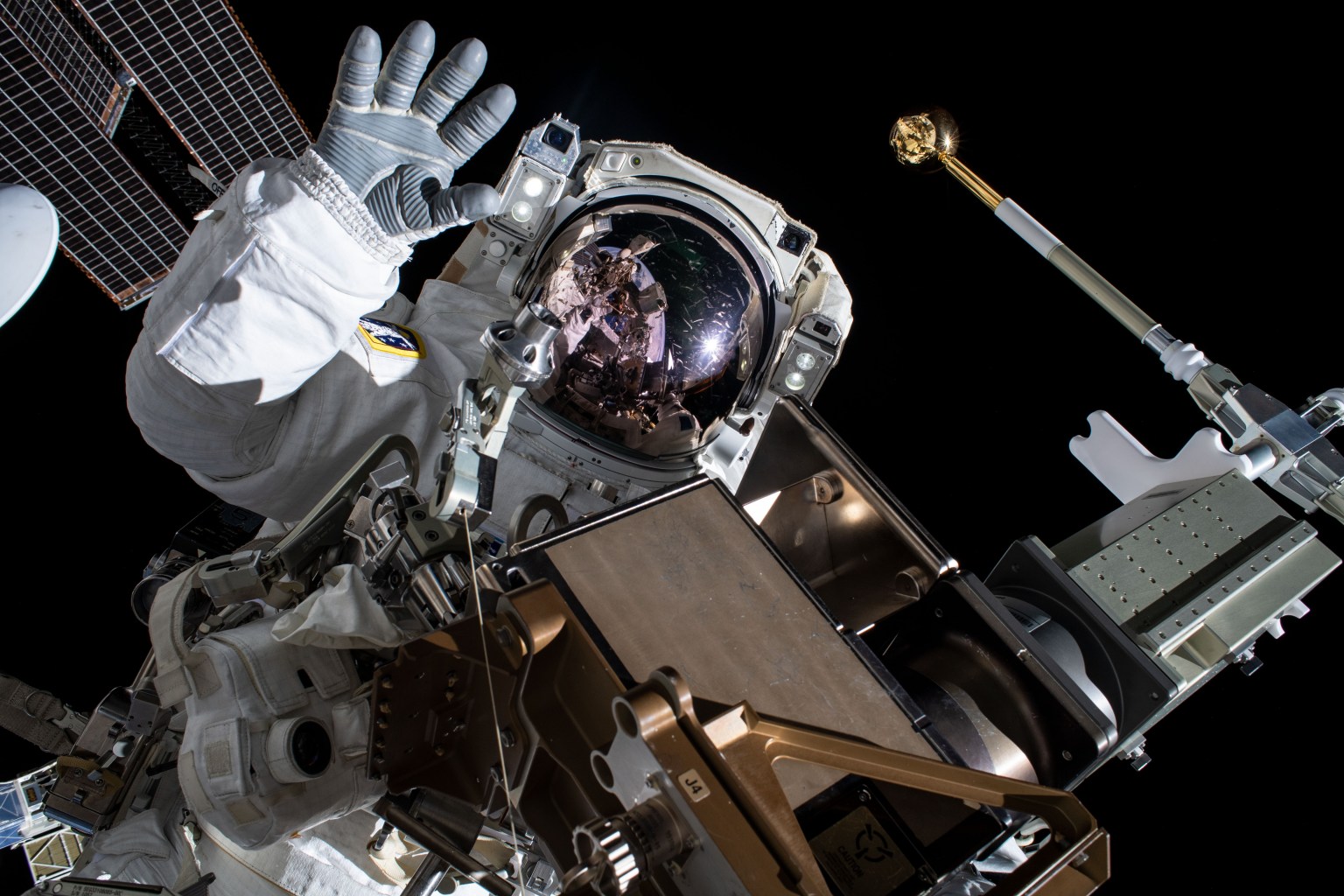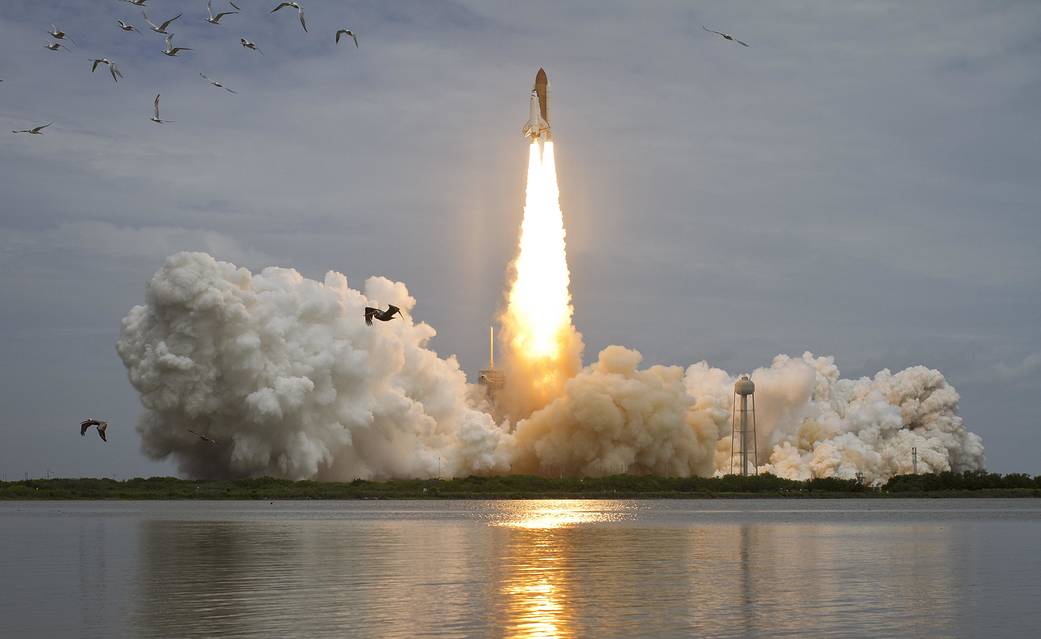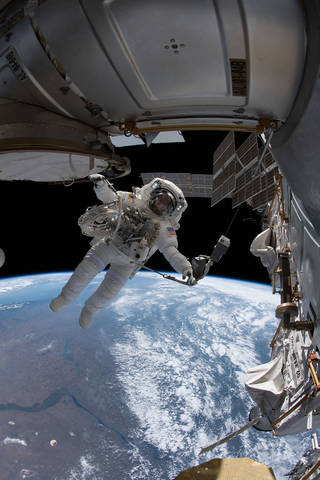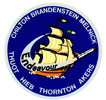
STS-49
The INTELSAT VI (F-3) satellite, stranded in an unusable orbit since its launch aboard a Titan vehicle in March 1990, was captured by crew members during an EVA and equipped with a new perigee kick motor. The satellite was subsequently released into orbit and the new motor fired to put the spacecraft into a geosynchronous orbit for operational use.
orbiter
mission duration
Launch
Landing
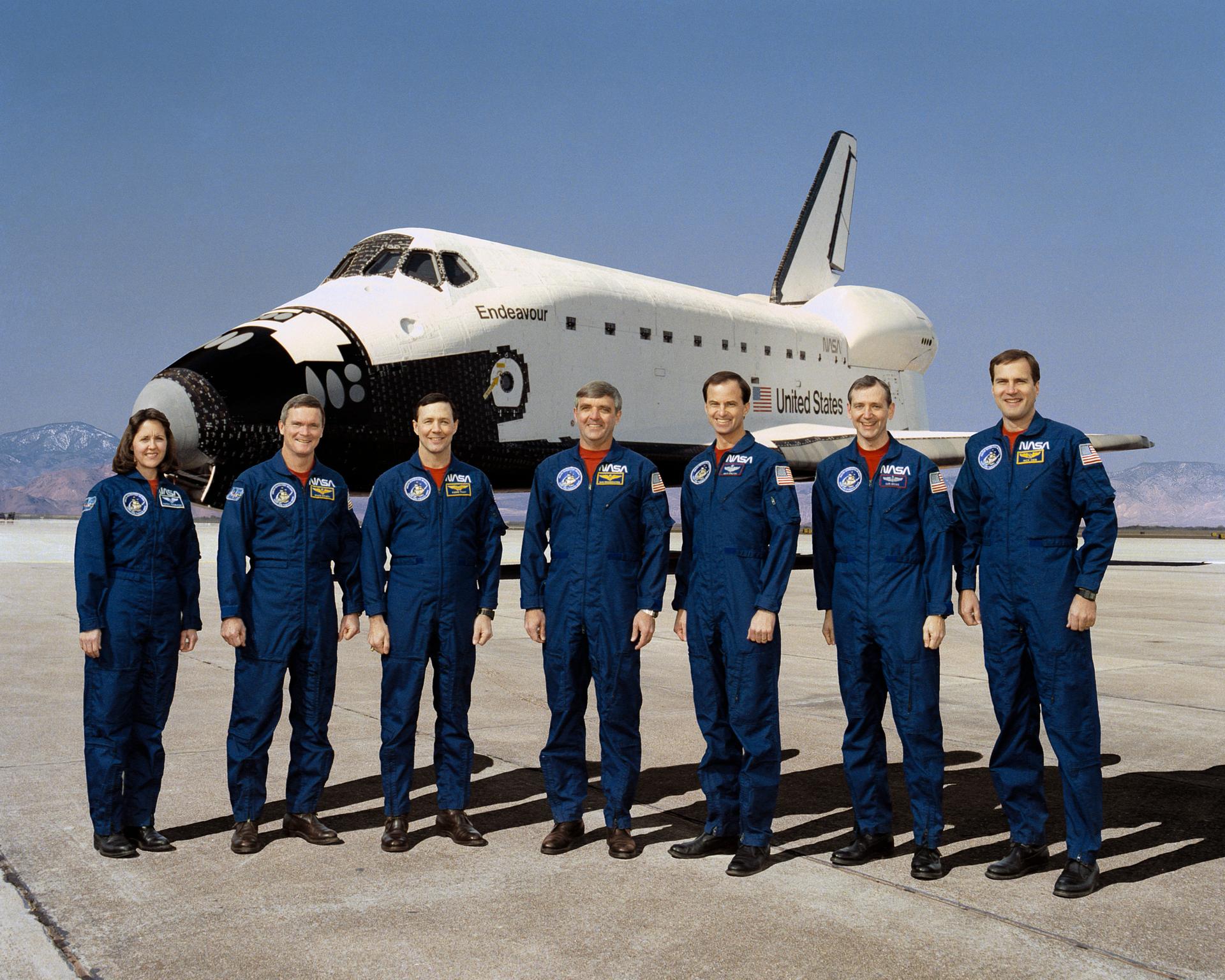
STS-49 Mission Facts
Mission: Intelsat VI Repair
Space Shuttle: Endeavour
Launch Pad: 39B
Launch Weight: 256,597 pounds
Launched: May 7, 1992, 7:40 p.m. EDT
Landing Site: Edwards Air Force Base, Calif.
Landing: May 16, 1992, 1:57:38 p.m. PDT
Landing Weight: 201,649 pounds
Runway: 22
Rollout Distance: 9,490 feet
Rollout Time: 58 seconds
Revolution: 141
Mission Duration: 8 days, 21 hours, 17 minutes, 38 seconds
Returned to KSC: May 30, 1992
Orbit Altitude: 195 nautical miles
Orbit Inclination: 28.35 degrees
Miles Traveled: 3.7 million
Crew
Daniel C. Brandenstein, Commander
Kevin P. Chilton, Pilot
Pierre J. Thuot, Mission Specialist
Kathryn C. Thornton, Mission Specialist
Richard J. Hieb, Mission Specialist
Thomas D. Akers, Mission Specialist
Bruce E. Melnick, Mission Specialist
Launch Highlights
The first flight of orbiter Endeavour. The launch was originally scheduled for May 4 at 8:34 p.m. EDT, but was moved to May 7 for an earlier launch window opening at 7:06 p.m. EDT which provided better lighting conditions for photographic documentation of vehicle behavior during the launch phase. Launch was delayed 34 minutes due to TAL site weather conditions.
Mission Highlights
The INTELSAT VI (F-3) satellite, stranded in an unusable orbit since its launch aboard a Titan vehicle in March 1990, was captured by crew members during an EVA (extravehicular activity) and equipped with a new perigee kick motor. The satellite was subsequently released into orbit and the new motor fired to put the spacecraft into a geosynchronous orbit for operational use.
The capture required three EVAs: a planned one by astronaut Pierre J. Thuot and Richard J. Hieb who were unable to attach a capture bar to the satellite from a position on the RMS; a second unscheduled but identical attempt the following day; and finally an unscheduled but successful hand capture by Pierre J. Thuot and fellow crewmen Richard J. Hieb and Thomas D. Akers as Commander Daniel C. Brandenstein delicately maneuvered the orbiter to within a few feet of the 4.5 ton communications satellite. An ASEM structure was erected in the cargo bay by the crew to serve as a platform to aid in the hand capture and subsequent attachment of the capture bar.
A planned EVA also was performed by astronauts Kathryn C. Thornton and Thomas D. Akers as part of the Assembly of Station by EVA Methods (ASEM) experiment to demonstrate and verify maintenance and assembly capabilities for Space Station Freedom. The ASEM space walk, originally scheduled for two successive days, was cut to one day because of the lengthy INTELSAT retrieval operation.
Other “payloads of opportunity” experiments conducted included: Commercial Protein Crystal Growth (CPCG), Ultraviolet Plume Imager (UVPI) and the Air Force Maui Optical Station (AMOS) investigation. The mission was extended two days to complete all of the objectives.
The following records were set during the STS-49 mission:
- First EVA involving three astronauts.
- First and second longest EVA to date: 8 hours and 29 minutes and 7 hours and 45 minutes.
- First shuttle mission to feature four EVAs.
- EVA time for a single shuttle mission: 25 hours and 27 minutes, or 59:23 person hours.
- First shuttle mission requiring three rendezvous with an orbiting spacecraft.
- First attachment of a live rocket motor to an orbiting satellite.
- First use of a-drag chute during a shuttle landing.
STS-49
Shuttle News
Retired Space Shuttle Locations
Shuttle Atlantis – Kennedy Space Center Visitor Complex Shuttle Discovery – Steven F. Udvar-Hazy Center Shuttle Endeavour – California Science…
Read the Story